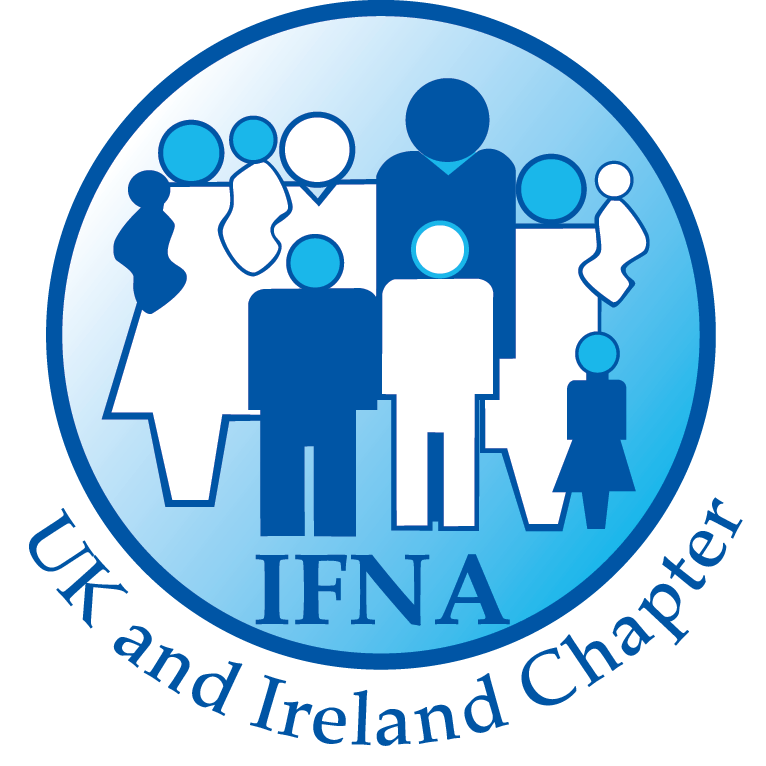The role of the Registered Nurse Learning Disabilities (RNLD) and the wider MDT in supporting families with an autism diagnosis
Chloe Hawkins, Learning Disabilities Student Nurse
Autism Spectrum Disorder (ASD) is a neurodevelopmental condition which is present from birth (National Institute for Health and Care Excellence, 2021). Autism presents differently in each individual, however there are core features of autism which may be present for many people (and which form the basis of diagnostic criteria as per the DSM-5, NICE, 2021).
Throughout, the term person/people with autism and neurodiverse will be used interchangeably to reflect some of the preferred identities of people with autism (Cooper et al. 2017). Terms such as ‘learning disability’ and ‘intellectual disability’ will be used to reflect some of the commonly used phrases both within the UK and on an international scale.
Evidence suggests that approximately 50-70% of people with autism also have a diagnosis of a learning disability (Foundation for People with Learning Disabilities, 2022), with a learning disability being defined as a lifelong condition, in which an individual’s ability to learn and retain new or complex information is impaired potentially requiring support with various aspects of their lives (Gates and Mafuba, 2015).
Registered Nurse Learning Disabilities (RNLD) are often referred to as learning disability nurses. They are highly skilled specialists within their field of nursing. RNLD’s support both the person with autism and in turn, the individual’s family. They work in collaboration with service users and their families to provide person centered and holistic care in a range of care environments. RNLD’s work with other nursing colleagues, and other health professionals such as occupational therapists, speech and language therapists and psychologists in assessing and diagnosing autism spectrum disorder. A multi-disciplinary team approach to the diagnostic process is best practice, following NICE guidance, and offers a range of professional knowledge and input to be utilised to benefit service users.
Russel et al. (2022) suggests that within the past 20 years, the number of people diagnosed with autism has risen by an approximate total of 787%. An increase in adulthood diagnoses of autism and autism awareness has increased the need for adult diagnostic services, however services remain limited despite the vital work that is undertaken (NHS digital, 2022). NHS digital (2022) report figures of increases in autism open referrals from 88,000 to 122,000 in the space of a year. This highlights the need for increased adulthood diagnostic services.
Compared to the corpus of literature focusing on childhood, little evidence is available regarding ageing with autism (Happé et al. 2016). RNLD’s are argued to be best placed alongside the MDT to support people with autism and people who have a diagnosis of a learning disability and autism. An emphasis on holistic care, including enhanced communication skills are enshrined in the Nursing and Midwifery Council (NMC, 2018) standards for all professional registrants.
Supporting individuals and families with understanding a diagnosis is a key aspect of the care given before, during and after a diagnosis is made. Due to autism being a neurodevelopmental condition, clinicians often work with both the individual who is undergoing their assessment process and their close family such as parents or grandparents who can provide information on the individuals development and childhood. Some individuals may not want family involved in their diagnostic process, and some may not have family members who were main caregivers in their formative years thus clinicians must rely on a greater level of self-reporting from the individual. The skills of the RNLD in building rapport and developing trust is crucial to ensure a safe space to undertake the assessment process. Notably, some elements of an autism assessment may focus upon differences or difficulties in which the individual has faced across their life and as such the role of the RNLD is also to assess mental state and provide empathetic and holistic care if the person becomes distressed.
RNLD’s are passionate advocates for inclusion, acceptance and promoting change. RNLD’s and other health professionals offer support, onward referral and guidance to family members alongside their patient/client/service-user. By promoting a family model of approach to care ensures that care needs are met for the entire family (Care Act, 2014)
Often, people with autism receive a multitude of support from family members, even if diagnosis has been later in life. Supporting families to understand the diagnosis has greater benefits for the individual, and on family relationships (Dugdale et al. 2021).
RNLD’s are privileged to work with and support children, young people, adults and their family members.
Reference list:
American Psychiatric Association (2013) Diagnostic and statistical manual of mental disorders. 5th ed. Arlington, VA: American Psychiatric Association.
Care Act (2014) Available at: https://www.legislation.gov.uk/ukpga/2014/23/contents/enacted (Accessed 19 January 2023).
Cooper, K., Smith, L. G. E. and Russell, A. (2017) ‘Social identity, self-esteem, and mental health in autism’, European Journal of Social Psychology 47, pp. 844-854. Available at: https://onlinelibrary.wiley.com/doi/full/10.1002/ejsp.2297 (Accessed 29 December 2022).
Foundation for People with Learning Disabilities (2022) ‘Learning Disability Statistics: Autism’ Available at: https://www.learningdisabilities.org.uk/learning-disabilities/help-information/statistics/learning-disability-statistics-/187690#:~:text=60%2D70%25%20of%20people%20who,disability%20or%20lower%20verbal%20IQ. Accessed (17 December 2022).
Gates, B. and Mafuba, K. (2015) Learning Disability Nursing Modern Day Practice. USA: Taylor and Francis Group.
Happé, F, G., Mansour, H., Barret, P., Brown, T. and Abbot, P. (2016) ‘Demographic and Cognitive Profile of Individuals Seeking a Diagnosis of Autism Spectrum Disorder in Adulthood’, Journal of Autism and Developmental Disorders, 44(11) pp. 3469-3480. Available at: https://www.proquest.com/docview/1830616901?accountid=12860&pq-origsite=primo (Accessed 01 January 2023).
Harper, G. (2016) ’10 Misconceptions about Autism’ Ambitious About Autism Available at: https://www.ambitiousaboutautism.org.uk/about-us/media-centre/blog/10-misconceptions-about-autism Accessed (17 October 2022).
National Institute for Health and Care Excellence (2021) ‘Autism Spectrum Disorder in Adults: Diagnosis and Management’, Available at: https://www.nice.org.uk/guidance/cg142 (Accessed 28 December 2022).
NHS Digital (2022) ‘Autism Statistics, July 2021 to June 2022’ Available at: https://digital.nhs.uk/data-and-information/publications/statistical/autism-statistics/july-2021-to-june-2022#:~:text=Between%20July%202021%20and%20June,88%2C000%20to%20just%20over%20122%2C000. Accessed (27 January 2023).
Nursing and Midwifery Council (2018) ‘The Code: Professional Standards of Practice and Behaviour for Nurses, Midwives and Nursing Associates’. Available at: https://www.nmc.org.uk/globalassets/sitedocuments/nmc-publications/nmc-code.pdf (Accessed 19 January 2023).
Russel, G., Stapely, S., Newlove-Delgado, T., Salmon, A., White, R., Warren, F., Pearson, A., and Ford, T. (2022) ‘Time Trends in Autism Diagnosis over 20 Years: A UK Population Based Cohort Study’, Journal of Child Psychology and Psychiatry, 63(6), pp. 674-682. Available at: https://acamh.onlinelibrary.wiley.com/doi/pdf/10.1111/jcpp.13505 (Accessed: 20 December 2022).

